because I am making an EFFORT for you guys, seriously.
I kind of never want to leave Turkey. Istanbul is incredibly beautiful and four hours going around Gallipoli was nowhere near enough.
Caveat: As with all my previous photos, the only camera I use is my crappy 5megapixel cameraphone, which does not really believe in focus or good resolution. Which might be why I post so few photos. 8D;
Turkish people are the friendliest people I have ever met, even beating out the Irish in sheer helpful and amazing. Unrelated to this, it's also the first time I've been hit on by a museum guard while he was working. It's actually the first time I've been hit on by a museum guard, period but I think the while he was working just adds a whole new level of hilarity to it.
I'm staying in the historical quarter, which mainly means there are a lot of very large and important mosques to stare at.
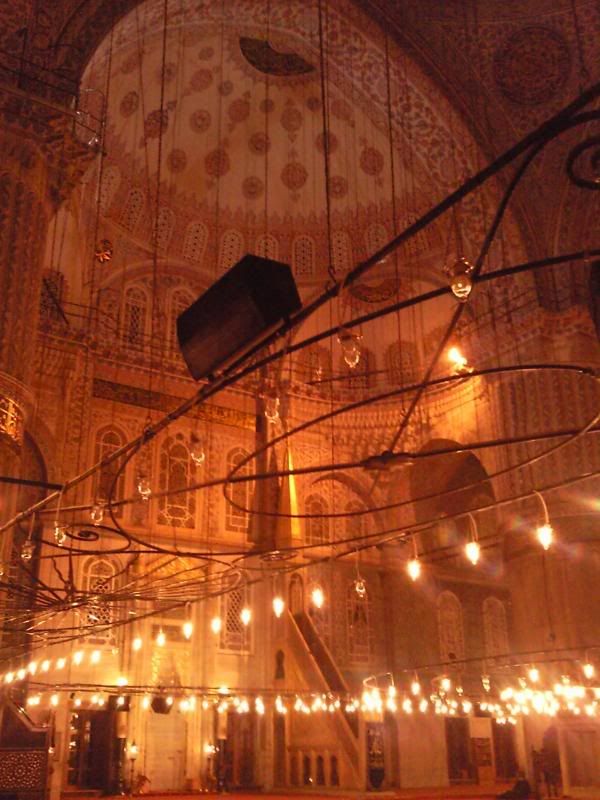
The Blue Mosque sort of breaks my heart. It was, incidentally, the first monument I visited after being ambushed on the street by some guide, being dragged to a shop for a drink of tea, and then taken about the Old City quarters for an impromptu tour while he worked on getting me to trust him enough to go out for dinner and drinks.
The informative tour was quite nice. Not so much the other things and my escape was quick and possibly exceptionally awkward and rude.
Opposite the Blue Mosque is the Ayasofya, a 1472 year old third incarnation of a church first built in 4th century AD that was turned into a mosque in the 15th century.
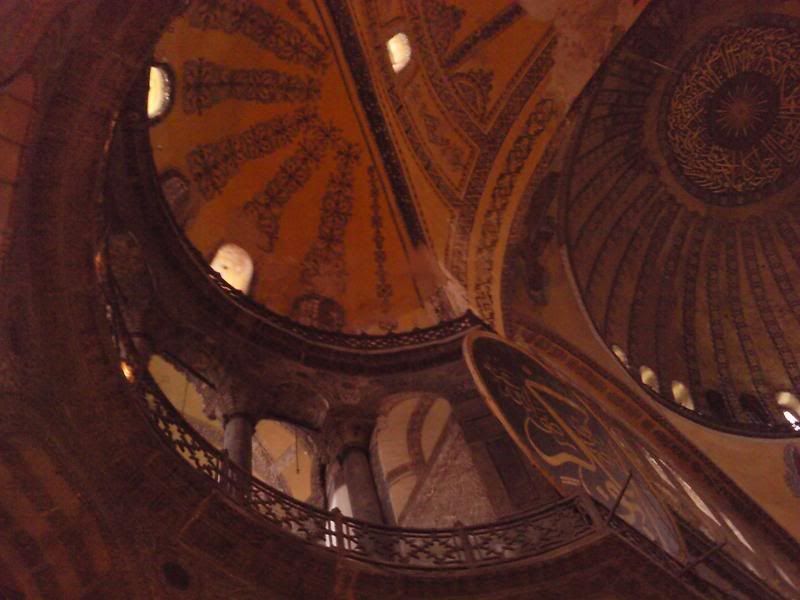

I have to admit, I fell in love a little with the low hanging chandeliers that can be found in all mosques.
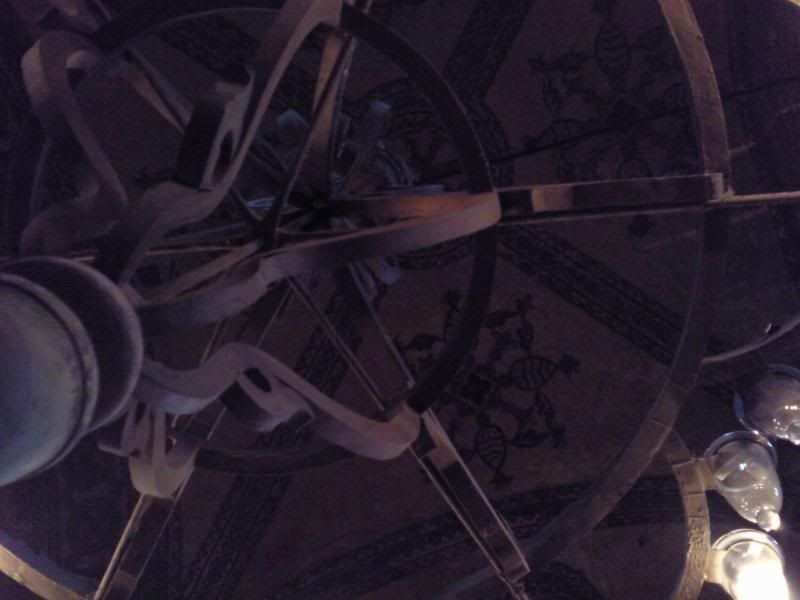
Because the mosques were built a mindblowingly long time ago, the lighting was naturally all oil lamps and candles and the large mosques are exceptionally large spaces so it was more practical to have the lighting very low so that worshippers could actually see.
It is unfairly stunning in this day and age. Actually, Istanbul is unfairly stunning after spending the night in an airport and travelling over 60km to get to your hostel via bus, ferry and tram.
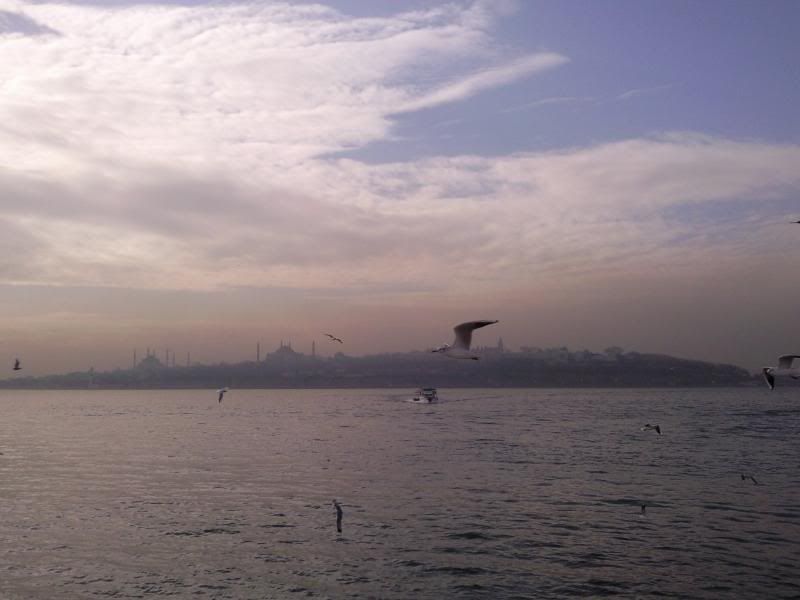
It did not help that the moment I cleared customs and the restricted area of the airport, someone jumped on me and tried to get me to take a ridiculously overpriced shuttle bus into the city. But I am all about doing things the hard way and puzzled out the public transport system all by my lonesome. ;Db (The ferry is still my favourite thing about Istanbul, ever.)
But after several days gallivanting about with various people from my hostel, I decided that if Turkey is a once in a lifetime thing for me, I am bloody well going to go see Gallipoli.
(And then, because I am also utterly practical, I went and bought a few packets of tissues because I cried when reading the description in the guidebook. I am totally the soggiest kitten in a teacup in the world.)
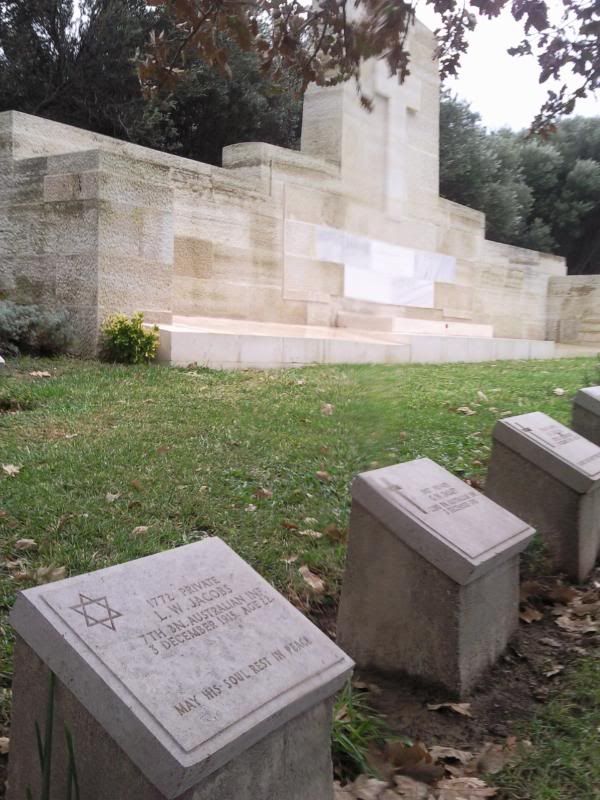
Needless to say, I spent the entire time pretending that I wasn't crying and went through an entire pocket pack of tissues. If you look a bit closer, the gravestone closest actually has a Star of David instead of the usual cross on about 99% of the other Allied graves.
We also visited some of the Turkish monuments which were startlingly beautiful.
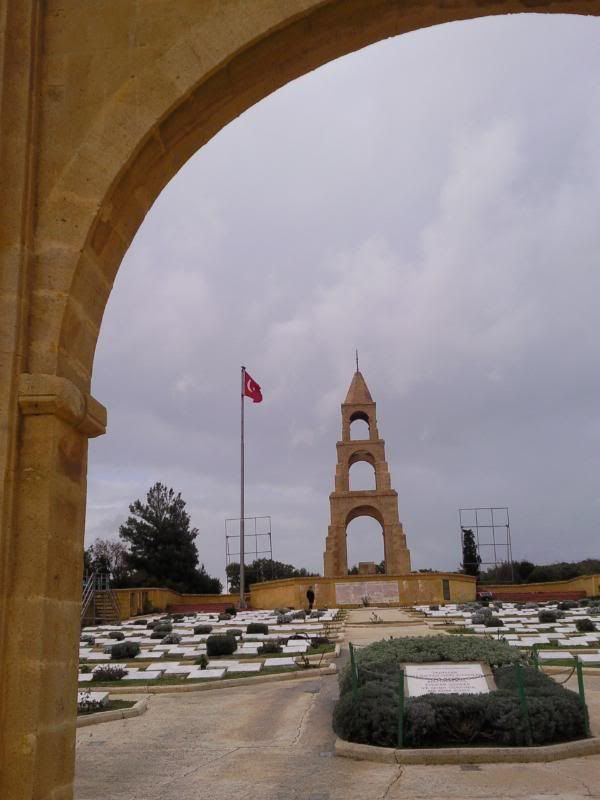
This one dates back to only 1993 as Turkey was too poor to put money into such things until a relatively short while ago. It commemorates the 57th battalion, who were wiped out entirely as the first force to face the ANZACs upon landing. Hopelessly outnumbered, they were ordered not just to fight but to go and die so that in the time, other troops could come to take their place and to always hold the line. Not a single soldier was older than 26. None of the bodies are actually buried there, but lie in the mass graves in the valleys.
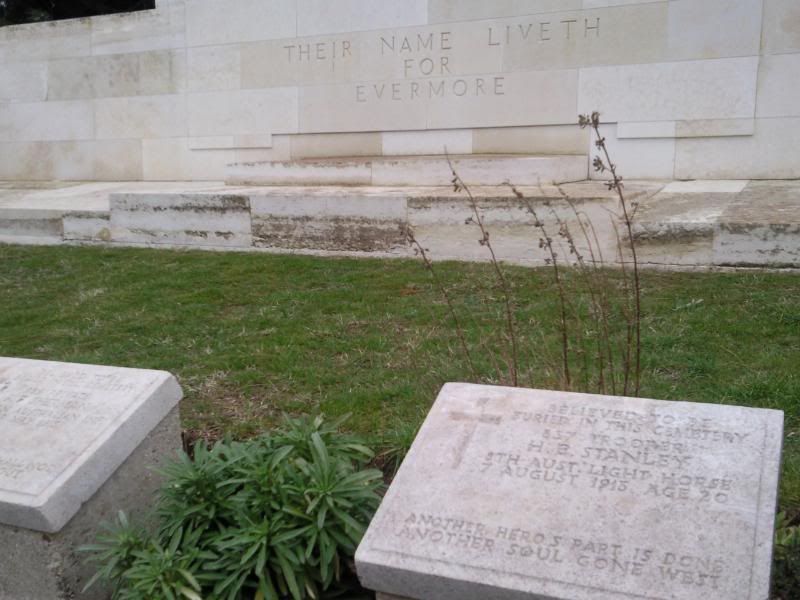
It's hard to be certain where each solder has their final resting place.
The youngest solder was only 14 years old, on the Allies. His grave is unknown but his name on the memorial plaques is always marked with a poppy for rememberance.
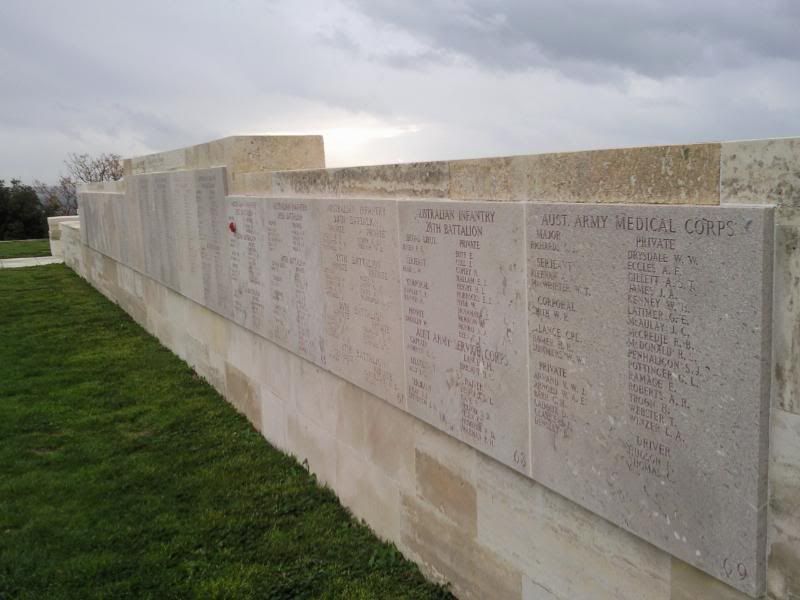
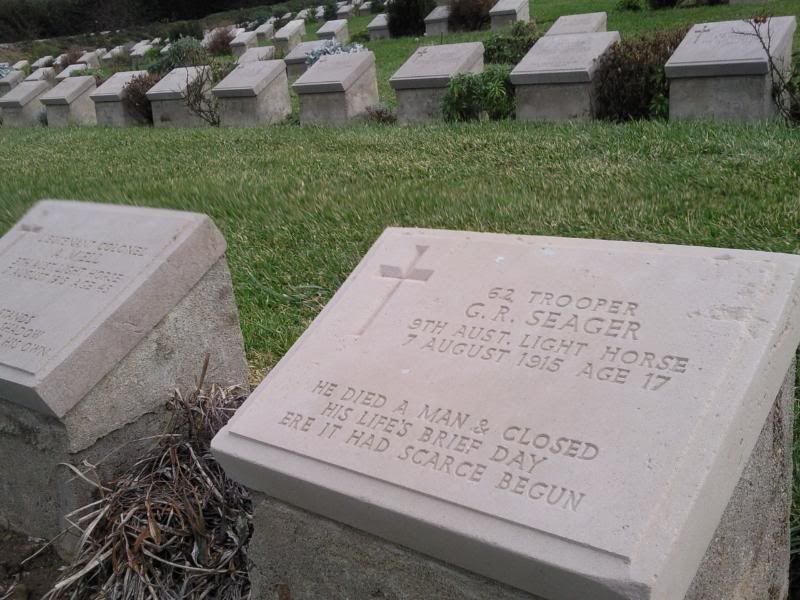
He died a man & closed his life's brief day ere it had scarce begun. Aged 17. The Allies were from all walks of life, from 14 up to their 40s but the amount of graves for boys younger than I was sobering.
I went around and read most of the gravestones of the cemetary plots we visited, though we didn't go to them all.

Every single one was heartbreaking.
A legend for many of us Australians is John Simpson and his donkey. He was only 22 and came over as a medic. Back home, he used to give children rides on a donkey and had the bright idea to commandeer a donkey to help move the wounded.
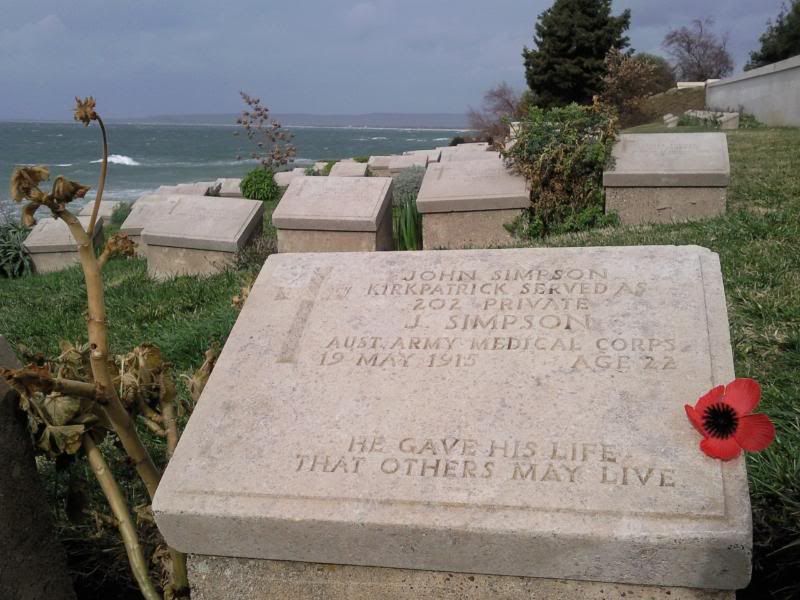
He was only there for three and a half weeks before he was shot but in that short time, he became an iconic figure for courage and compassion.
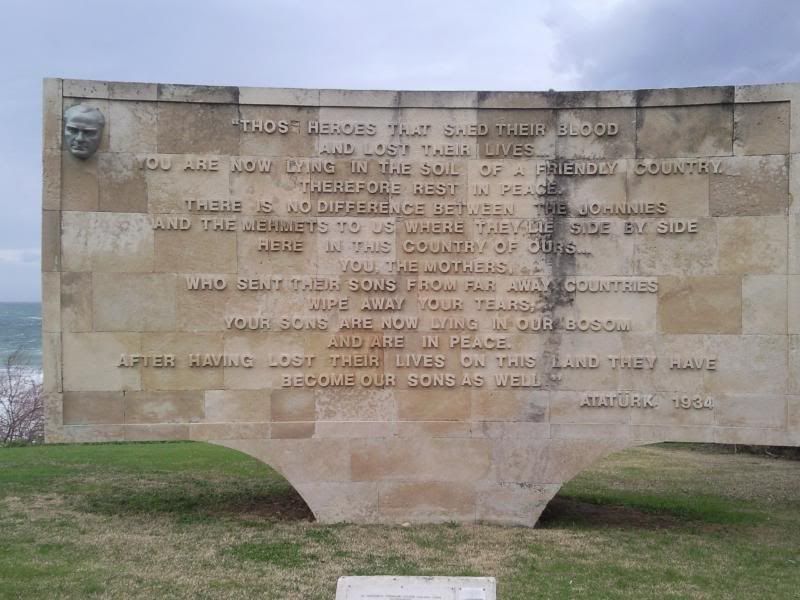
A Turkish monument with Mustafa Kemal Atatürk's words of peace, spoken in 1934 towards the Allies.
Those heroes that shed their blood and lost their lives...
You are now living in the soil of a friendly country.
Therefore rest in peace.
There is no difference between the Johnnies and the Mehmets to us where they lie side by side here in this country of ours...
Who sent their sons from far away countries wipe away your tears;
Your sons are now lying in our bosom and are in peace.
After having lost their lives on this land they have become our sons as well.

I'm a little overwhelmed. I stood on Anzac Cove and looked up at the Sphinx, looked over the Valley of Shrapnel where the gunshots never ceased. I ran up and down the trenches and peered into boltholes, trying to imagine what it was like on the front lines. The museum shows the melted bullets that collided in mid-air, in the heavy fire that never stopped. The front lines, at points, were only eight metres apart between the fighting forces.
I am glad I saw it. I am.
Caveat: As with all my previous photos, the only camera I use is my crappy 5megapixel cameraphone, which does not really believe in focus or good resolution. Which might be why I post so few photos. 8D;
Turkish people are the friendliest people I have ever met, even beating out the Irish in sheer helpful and amazing. Unrelated to this, it's also the first time I've been hit on by a museum guard while he was working. It's actually the first time I've been hit on by a museum guard, period but I think the while he was working just adds a whole new level of hilarity to it.
I'm staying in the historical quarter, which mainly means there are a lot of very large and important mosques to stare at.

The Blue Mosque sort of breaks my heart. It was, incidentally, the first monument I visited after being ambushed on the street by some guide, being dragged to a shop for a drink of tea, and then taken about the Old City quarters for an impromptu tour while he worked on getting me to trust him enough to go out for dinner and drinks.
The informative tour was quite nice. Not so much the other things and my escape was quick and possibly exceptionally awkward and rude.
Opposite the Blue Mosque is the Ayasofya, a 1472 year old third incarnation of a church first built in 4th century AD that was turned into a mosque in the 15th century.


I have to admit, I fell in love a little with the low hanging chandeliers that can be found in all mosques.

Because the mosques were built a mindblowingly long time ago, the lighting was naturally all oil lamps and candles and the large mosques are exceptionally large spaces so it was more practical to have the lighting very low so that worshippers could actually see.
It is unfairly stunning in this day and age. Actually, Istanbul is unfairly stunning after spending the night in an airport and travelling over 60km to get to your hostel via bus, ferry and tram.

It did not help that the moment I cleared customs and the restricted area of the airport, someone jumped on me and tried to get me to take a ridiculously overpriced shuttle bus into the city. But I am all about doing things the hard way and puzzled out the public transport system all by my lonesome. ;Db (The ferry is still my favourite thing about Istanbul, ever.)
But after several days gallivanting about with various people from my hostel, I decided that if Turkey is a once in a lifetime thing for me, I am bloody well going to go see Gallipoli.
(And then, because I am also utterly practical, I went and bought a few packets of tissues because I cried when reading the description in the guidebook. I am totally the soggiest kitten in a teacup in the world.)

Needless to say, I spent the entire time pretending that I wasn't crying and went through an entire pocket pack of tissues. If you look a bit closer, the gravestone closest actually has a Star of David instead of the usual cross on about 99% of the other Allied graves.
We also visited some of the Turkish monuments which were startlingly beautiful.

This one dates back to only 1993 as Turkey was too poor to put money into such things until a relatively short while ago. It commemorates the 57th battalion, who were wiped out entirely as the first force to face the ANZACs upon landing. Hopelessly outnumbered, they were ordered not just to fight but to go and die so that in the time, other troops could come to take their place and to always hold the line. Not a single soldier was older than 26. None of the bodies are actually buried there, but lie in the mass graves in the valleys.

It's hard to be certain where each solder has their final resting place.
The youngest solder was only 14 years old, on the Allies. His grave is unknown but his name on the memorial plaques is always marked with a poppy for rememberance.


He died a man & closed his life's brief day ere it had scarce begun. Aged 17. The Allies were from all walks of life, from 14 up to their 40s but the amount of graves for boys younger than I was sobering.
I went around and read most of the gravestones of the cemetary plots we visited, though we didn't go to them all.

Every single one was heartbreaking.
A legend for many of us Australians is John Simpson and his donkey. He was only 22 and came over as a medic. Back home, he used to give children rides on a donkey and had the bright idea to commandeer a donkey to help move the wounded.

He was only there for three and a half weeks before he was shot but in that short time, he became an iconic figure for courage and compassion.

A Turkish monument with Mustafa Kemal Atatürk's words of peace, spoken in 1934 towards the Allies.
Those heroes that shed their blood and lost their lives...
You are now living in the soil of a friendly country.
Therefore rest in peace.
There is no difference between the Johnnies and the Mehmets to us where they lie side by side here in this country of ours...
Who sent their sons from far away countries wipe away your tears;
Your sons are now lying in our bosom and are in peace.
After having lost their lives on this land they have become our sons as well.

I'm a little overwhelmed. I stood on Anzac Cove and looked up at the Sphinx, looked over the Valley of Shrapnel where the gunshots never ceased. I ran up and down the trenches and peered into boltholes, trying to imagine what it was like on the front lines. The museum shows the melted bullets that collided in mid-air, in the heavy fire that never stopped. The front lines, at points, were only eight metres apart between the fighting forces.
I am glad I saw it. I am.